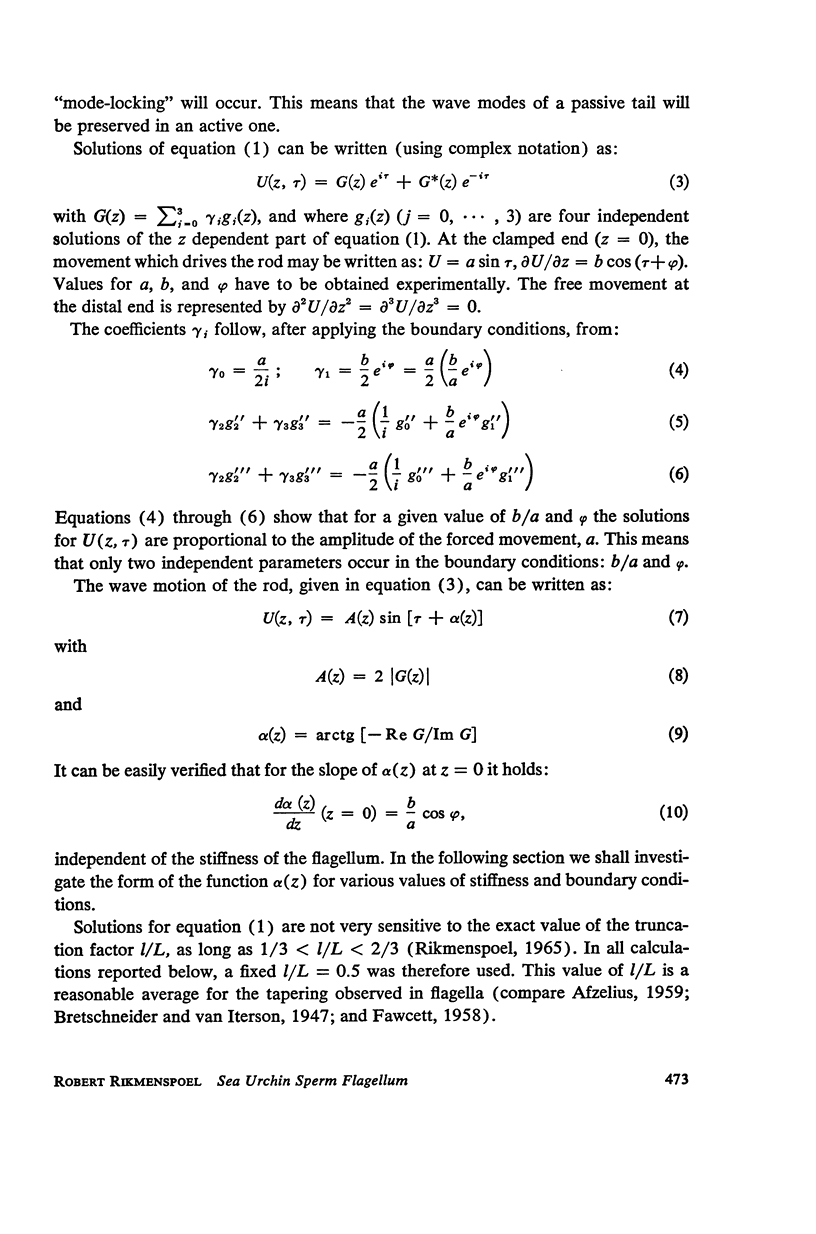Abstract
The theory of flexural vibrations in thin rods, applied to the movement of flagella, has been extended to include an investigation of the influence of the boundary conditions on the theoretical waveforms. It was found that for flagella which are flexible enough, the flexibility can be estimated solely from the wavelength of the wave traveling in it. This can be expected to hold for those flagella which do not possess a fibrous sheath. The bending moment in flagella in which the ampitude of the wave is maintained as the wave travels distally is almost completely produced by active contractile elements. This means that the active bending moment can be estimated from the radius of curvature of the flagellum and the stiffness. The above findings were applied to the case of the sea urchin sperm flagellum. One finds that the stiffness of the flagellum is caused mainly by the nine longitudinal fibers which must have a Young's modulus of slightly less than 108dyne/cm2. The longitudinal fibers need to develop a tension of 1.6 × 108dyne/cm2 to account for the bending moment in the flagellum. These two figures are in line with those found for muscle fibers.
Full text
PDF








Images in this article
Selected References
These references are in PubMed. This may not be the complete list of references from this article.
- AFZELIUS B. Electron microscopy of the sperm tail; results obtained with a new fixative. J Biophys Biochem Cytol. 1959 Mar 25;5(2):269–278. doi: 10.1083/jcb.5.2.269. [DOI] [PMC free article] [PubMed] [Google Scholar]
- BURNASHEVA S. A. K kharakteristike sokratitel'nogo belka semennykh kletok spermozina. Biokhimiia. 1958 Jul-Aug;23(4):558–563. [PubMed] [Google Scholar]
- Brokaw C. J. Non-sinusoidal bending waves of sperm flagella. J Exp Biol. 1965 Aug;43(1):155–169. doi: 10.1242/jeb.43.1.155. [DOI] [PubMed] [Google Scholar]
- Rikmenspoel R. The tail movement of bull spermatozoa. Observations and model calculations. Biophys J. 1965 Jul;5(4):365–392. doi: 10.1016/S0006-3495(65)86723-6. [DOI] [PMC free article] [PubMed] [Google Scholar]



